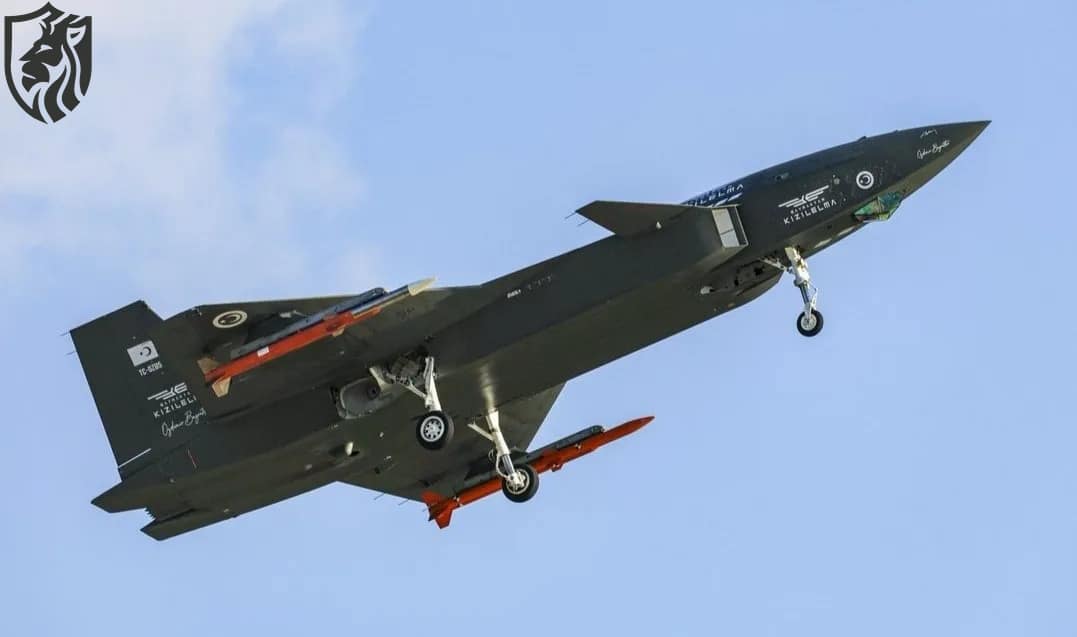
F-35 vs S-400
India and Turkey: Allies Who Became Strategic Enemies
In the world of geopolitics, India and Turkey are moving further apart. These regional powers are now backing different sides in places like South Asia, the Eastern Mediterranean, and the Caucasus. During the short-lived India-Pakistan war in May, Ankara publicly supported Islamabad.
This split isn’t just in diplomacy; it’s also in buying military goods. India is spending a lot of money on the Russian S400 air defense system, but it looks like Turkey’s ready to give it up.

Turkey Moves from S-400 to F-35
Turkey made two important announcements during the most recent NATO conference in The Hague. First, it says that it will be expanding its “Steel Dome” air defense program. Second, it showed a strong desire to rejoin the US-led F-35 Joint Strike Fighters (JSF) program.
During his trip back from the meeting, Turkish President Recep Tayyip Erdoğan talked about this change. He stressed that the “Steel Dome” is not just one thing but a networked, multi-layered system that works better against missile threats. This timing is not a mistake. The ongoing conflict between Iran and Israel, along with India’s missile strikes on Pakistani targets, has made it increasingly important to develop advanced air defense systems.
Inside Turkey’s “Steel Dome” Project for Indigenous People
The concept of a “steel dome” represents a robust air defense system. Aselsan, Roketsan, and MKE are some of the Turkish military companies that are working together to combine short-, medium-, and long-range systems.
- In the Very Short Range category (0–10 km), the most important systems are Korkut, Gökberk, and Sungur.
- Herikks, Hisar A+, and Gökdemir are all in the short range (5–10 km).
- Kalkan 1, Kalkan 2, and Hisar O+ are all in the medium range (10–15 km).
- Siper system for long-range (15–100+ km)
Aselsan got more than $600 million in funding in March 2025 to work on this technology. Turkey has now acknowledged that the Steel Dome will cover the whole country, although it is important to note that the Russian S-400 system is not included in the framework.
S-400 Left Out: Technical and Political Pressure Mounts
Integrating Russia’s S-400 into Turkey’s Steel Dome system will be extremely difficult due to compatibility and data-sharing issues.
>Defence analyst Sinan Elgin stated that foreign systems like the S-400 hinder effective integration and coordination within layered air defence networks.
In 2017, Turkey purchased the S-400 for $2.5 billion, yet it remains unused. Instead, it stays in storage, out of reach of operational usage. Hulusi Akar, the former minister of defense, said that the system is “ready to deploy if needed,” but Turkey doesn’t seem to want to do that.
Is it possible for India to buy Turkey’s unused S-400 systems?
There has been talk of getting rid of the S-400 systems that are not being used since Turkey is leaning towards the F-35 again. Cavit Çağlar, a former minister, even said that Turkey should think about selling the systems.
He thought that India might be a possible buyer when questioned about who might buy it. Whereas India is becoming more and more interested in adding to its stock of S-400s, even though no agreement has been made yet.
India Sticks with the S-400 System
India and Russia inked a deal in 2018 for five S-400 squadrons worth $5.43 billion. Only three have been delivered as of the middle of 2025. After its latest fight with Pakistan, called Operation Sindoor, New Delhi asked Moscow to speed up the other two.
Indian defense officials also say that the government might buy two more S-400 squadrons, which would strengthen its ability to deny airspace. India’s choice to focus on air defense over stealth planes, like the F-35, makes sense given that China has sent over 200 J-20 stealth fighters and 40 J-35s to Pakistan.

Turkey Wants the F-35 to Bring NATO Back Together
Turkey is once again following NATO rules by not including the S-400 in its defensive structure. President Erdoğan recently stated that Turkey “has not given up on the F-35” and seeks to rejoin the program. He confirmed that discussions with American counterparts about Turkey’s return to the F-35 program have already started at technical levels.
After the first shipment of S-400 systems came from Russia in 2021, the US kicked Turkey out of the F-35 cooperation. After that, the CAATSA statute put sanctions in place. But now that Turkey has signaled a pullback from Russian weapons, the US seems ready to change its mind.
Tom Barrack, the US ambassador, told Anadolu Agency that the US might relax the restrictions on Turkey’s weapons sector by the end of 2025. He said that direct talks between Erdoğan and US President Donald Trump at the NATO summit had started the process of re-entry again.
India and Turkey are going in different directions.
India is strengthening its air defenses with Russian missile systems, while Turkey is regaining confidence with NATO and getting ready to buy American stealth jets. This difference is not merely a tactical choice but also a sign of larger strategic alliances.
India remains focused on air denial, despite facing China and Pakistan, who are advancing with next-generation stealth fighter capabilities rapidly.
>Turkey views the F-35 as essential for defending against regional threats, including Israel and Greece, both operating the advanced stealth fighter.
Overall, it’s a story of two doctrines.
Turkey’s prospective sale of the S-400 and return to the F-35 fold show that things are changing from East to West. On the other hand, India continues to prioritize strengthening its layered air defense as its primary objective.
Turkey is sending a message that it is breaking away from Russian technology, while India is using it to protect its borders. It doesn’t matter if Ankara sells its unused S-400 systems or maintains them.
References
- SIPRI Arms Transfers Database—Armenia’s Imports from India (2022–2024)
https://sipri.org/databases/armstransfers - TRT Global report on Turkey’s Steel Dome Expansion
https://www.trtworld.com - BBC Turkey interview with Defence Analyst Sinan Elgin
https://www.bbc.com/turkce - Aselsan Steel Dome Funding Announcement – Turkish Ministry of Industry
https://www.savunmasanayist.com - Anadolu Agency interview with U.S. Ambassador Tom Barrack
https://www.aa.com.tr/en - India’s S-400 Deal and Delivery Timeline – The Hindu
https://www.thehindu.com/news/national/india-s400-delivery-status/article66789025.ece - EurAsian Times on Turkey’s Indigenous Air Defence Plans
https://eurasiantimes.com - F-35 Sale to Greece Confirmed by U.S. DoD
https://www.dsca.mil/press-media/major-arms-sales/greece-f-35a-lightning-ii-aircraft - India-China Air Power Gap: AMCA, J-20, and J-35 Comparison – The Print
https://theprint.in/defence/india-air-power-gap-china-j20-j35-amca/1702937/ - Operation Sindoor: India’s Missile Strikes on Pakistan – Times of India
https://timesofindia.indiatimes.com/india/operation-sindoor-analysis-india-pakistan-conflict-2025/articleshow/109456789.cms









